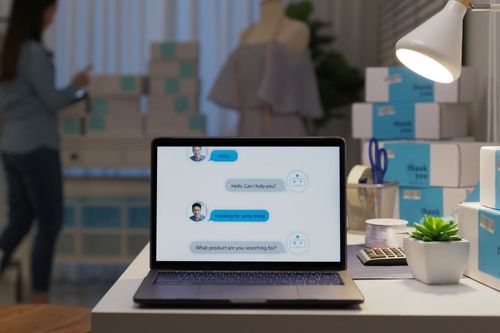
Implications for marketers making the shift from human to bot customer reps
AI chatbots and agents are increasingly replacing human customer service representatives in contact centers across industries ranging from retail and travel to consumer technology and health care.
Companies are shifting to AI agents because they are faster at processing information and more cost-efficient. But how do customers react to them versus human agents?
A research paper published in the Journal of Marketing revealed that when companies need to deliver bad news to a customer – a delivery is delayed, refund will not be given or prices will increase – sending an AI agent will get less negative responses compared to a human.
The customer still will be likely to buy or use the service again and experience greater satisfaction than if a human agent delivered the bad news.
But when a company is giving the customer good news – say, you will get a discount on your purchase – using a human messenger will elicit better responses than an AI.
“Consumers typically do not believe that an AI agent’s behavior is driven by underlying selfishness or kindness,” wrote the authors of the paper, “Bad News? Send an AI. Good News? Send a Human,” by Aaron Garvey, TaeWoo Kim and Adam Duhachek.
“As a result, consumers believe that AI agents lack selfish intentions (which would typically be punished) in the case of an unfavorable offer and lack benevolent intentions I(which would typically be rewarded) in the case of a favorable offer,” they wrote.
Another finding: Making an AI agent look more human makes a difference in how customers respond to it.
A service robot with a human body structure and facial features will get a more favorable response to good news than a machine-like AI agent. “AI agents that are more humanlike are perceived to have stronger intentions when making the offer,” the authors said.
Lesson for marketers
For marketers, the lesson here is to quicken the move from human to AI agent if the contact center tends to have negative interactions more frequently. The reverse also is true: postpone replacing humans with AI when interactions tend to be more positive.
When human and AI agents are both used in the contact center, marketers have the option to use the AI bot to deliver bad news.
For companies that are just using AI agents, such as mobile and online services, selectively using bots that appear more human-like in positive situations would be beneficial.
About the Author(s)
You May Also Like


.jpg?width=700&auto=webp&quality=80&disable=upscale)
.jpg?width=700&auto=webp&quality=80&disable=upscale)
.jpg?width=700&auto=webp&quality=80&disable=upscale)
.jpg?width=300&auto=webp&quality=80&disable=upscale)
.jpg?width=300&auto=webp&quality=80&disable=upscale)
.jpg?width=300&auto=webp&quality=80&disable=upscale)

